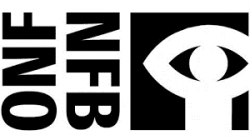Uncle Thomas: Accounting for the Days is about the special relationship between Regina Pessoa and her uncle. The short film is a testament to her love for this eccentric, who was an artistic inspiration and played a key role in her becoming a filmmaker. It’s also a moving tribute to a poet of the everyday who was obsessed by numbers and calculations.
Pessoa takes the viewer to Portugal, reading a very personal letter to her late uncle, inspired by her many memories of the man. This narrative approach is at once poignant and compelling, highlighting her undeniable formal mastery and a distinctive engraving aesthetic that wields textures, shadow, and light to create an account that’s both personal and universal.
Co-produced by Ciclope Filmes, the National Film Board of Canada, and Les Armateurs, this is world-renowned animator Regina Pessoa’s most personal work to date—an important film that celebrates love and difference.
50 words
Uncle Thomas: Accounting for the Days is about the special relationship between Regina Pessoa and her uncle. The film is a testament to her love for this eccentric, who was an artistic inspiration and played a key role in her becoming a filmmaker. A moving tribute to a poet of the everyday.
One-liner
Uncle Thomas: Accounting for the Days is about the special relationship between Regina Pessoa and her uncle. The film is a testament to her love for this eccentric, who played a key role in her becoming a filmmaker.
You made a trilogy of films about childhood: The Night, Tragic Story with Happy Ending, and Kali the Little Vampire. What were you hoping to explore with Uncle Thomas: Accounting for the Days? Why did you decide to direct a film about your uncle?
I had wanted to make a film about my Uncle Thomas for a long time. I feel a real affection for him, because it was with him that I first started drawing, on the walls of my grandmother’s house, where he lived. His social behaviour wasn’t what you’d call “normal,” in terms of family, work, ambition, and so on. In that sense, he was somewhat marginal. But he was a good man who was kind and generous with his nephews and nieces. From what I could gather, my uncle had been through some family misfortunes that had a profound effect on him, bringing out more of his obsessive nature. I was always hurt by the way he wasn’t respected by the family or people in his village. I asked myself, “Why shouldn’t my uncle be celebrated?” I wanted to show that people don’t have to do extraordinary things to play an important role in our lives. And that became my motivation for making the film. Of course, I do deal with childhood once again in Uncle Thomas, but I put it in perspective, starting with my point of view as the adult I’ve become.
Why did you choose to use several different animation techniques? Tell us about your approach. Your aesthetic is very similar to engraving. How did you develop this style?
I intended to use a mix of techniques right from the start of the project. I wanted to continue developing my style, but I also wanted to use a bit of stop motion to animate the notes and personal journal entries, as well as the possessions belonging to my uncle that I’d kept. I hoped to succeed in combining these different techniques while creating a coherent aesthetic. I think that I first began using animated engraving because of my training: I studied painting at the Porto School of Fine Arts. So when I started out and I was considering which techniques to use, I wasn’t thinking like an animator. I find it extremely difficult to calculate the number of drawings I’ll need to make and to determine which technique works best with the runtime, story, and budget. I think more about the aesthetic aspects and the way they’ll contribute to the story and add value to it. The animated engraving technique I developed allows me to create rich worlds—with movement that’s organic, lively, and dramatic. This technique also allows me to develop incredible textures by playing with light and shadow. I’ve been using animated engraving since my very earliest projects. First, engraving in plaster for The Night and on paper for Tragic Story with Happy Ending. For Kali the Little Vampire, I dived into the digital age, while using some specific tools in order to maintain my style.
This film is your third with the NFB. Tell us about your work with the Animation Studio, and some of your memorable experiences.
Uncle Thomas: Accounting for the Days is the third film I’ve co-produced with the NFB. Our collaboration began in 2002, and has been extremely important to me. With each film that I directed, I was able to go a bit farther and learn a bit more, allowing me to get to the next level. I feel privileged to be able to work with this institution. And, of course, I’ve had some very special and remarkable moments. I remember recording Christopher Plummer’s voice for Kali the Little Vampire. That was quite an experience. A real adventure! First, I flew from Portugal to New York, where I met producer Julie Roy, who had come in from Montreal. Then, a driver took us out into an area with fields and woods… Finally, we came to a sound studio in a clearing in the middle of a forest. Soon after, Christopher Plummer walked in, smiled, and said, “Who are these two exotic ladies?” Julie and me—one blonde, one brunette, both smiling like groupies. We directed the recording session, which the great actor did with both mastery and humility… and then he was gone. It all went so fast! Then, Julie and I were both driven back to the airport. We felt like we had just lived through a dream. The whole thing seemed unreal. And we kept smirking, thrilled to have lived through this unlikely and once-in-a-lifetime experience.
Tell us about the music you use in the film.
The wonderful music in the film was composed by Normand Roger. This is the second time we’ve worked together, and we also share a property in Portugal. (It’s almost as though we’re family.) We agreed right from the start of the project that Normand would do the music and soundtrack. He even told me I could use his compositions while I was creating the animatic—so I did.
I think a lot about the kind of music I want in my films. This time, I knew I wanted violin, because my grandfather played the instrument and my uncle loved it. And, given the autobiographical nature of the film, the team decided that I would do the little girl’s voice. So early on we recorded a rough version for the animatic. I also asked Abi [Feijó] to try doing the voice of Uncle Thomas. We liked the results so much, we asked him to do the voice for the final version of the film. Normand orchestrated the sound elements while also writing tremendous, powerful, and sensitive music.
Is this film based entirely on your own lived experiences?
Everything in the film is true. I drew alongside Uncle Thomas while he wrote his notes or did his calculations. I drew with him on the walls. He would light a fire in the fireplace and share his sandwiches with me to comfort me. And the motorcycle ride really happened too—it was in May, on Ascension Day. I remember it clearly, because on that day the Portuguese go out into the fields to have picnics and gather a stalk of wheat, an olive branch, and a poppy. That’s why I drew a field of poppies in the film. It was an unforgettable day… Uncle Thomas also really did tell me that he was a melancholy man and that he once had a girlfriend. And when I would knock on his door and he wasn’t feeling well, he really would call out that he had broken down, and would tell me to leave. Much later, I really did tell him over the phone that I loved him, and he really replied, “Of course, of course, we all love each other.”
I have to confess that I was not special to him, because he treated all his nephews and nieces the same way. But since I lived next door to him, I saw him a lot more often than my cousins did… I began the project by drawing two children in the storyboard: my sister and me. But the producers found it too confusing. It wasn’t always clear who was telling the story. So I had to take my sister out.
There’s just one small thing in the film that didn’t really happen: Uncle Thomas never put a feather in my hair. I created that moment as a reference to a sequence in the storyboard that was cut. Of course, all of these moments took place at different times, and in a different order from what the film shows. I had to find a way to link them together so the story would flow.
There is a funny scene in the film in which you and your uncle follow a small white rabbit. Is it a nod to Alice’s Adventures in Wonderland or to the famous Annecy Festival rabbit?
I’ve loved Alice’s Adventures in Wonderland ever since I was a university student (my senior project for my fine-arts degree was related to the book). When I have a chance, I refer to it in my creative work. And that holds true for this latest film as well. Of course, there’s the white rabbit, but I also see Uncle Thomas representing Carroll’s Mad Hatter.
Ciclope Filmes
Office national du film du Canada /National Film Board of Canada
Les Armateurs
present
with the participation of
Centre National du Cinéma et de l’Image Animée
Support to French-portuguese film co-productions
with the participation of
Phil Davies
Arte France
This film benefitted from a residency at
Ciclic Animation
Direction, concept and storyboard
Regina Pessoa
Music and Sound Design
Normand Roger
Script Advisor
Andreas Hykade
Animation
Regina Pessoa
André Marques
Sara Naves
Alexandre Braga
Sylvie Trouvé
Dale Hayward
Marc Robinet
Soukaïna Najjarane
Nils Delot
Paintings
Regina Pessoa
Sara Naves
André Marques
Alexandre Braga
Set Backgrounds
Colectivo Monte
Voices
Regina Pessoa
Abi Feijó
Compositing
Nicolas Liguori
Editing
Abi Feijóe
Orchester Leader
Denis Chartrand
Musicians
Alain Aubut
Amélie Benoit Bastien
Anne Beaudry
Julie Triquet
Samuel Martins Coelho
Recordings
Alexandre Braga
Pierre Yves Drapeau
Sound studio
Estúdios Adega
Studiotoons
Mix
Isabelle Lussier
Online
Serge Verrault
Associated general director
Ivan Rouveure
Marion Delord
Development direction
Delphine Nicolini
Production coordination
Laetitia Seguin
Michèle Labelle
Legal counsel
Mathieu Bardou
Administration
Anne-Marie Bousquet
Diane Régimbald
Karine Desmeules
Mylene Augustin
Accounting
Luís Pereira
Serge Colibert
Technical direction
Pierre Plouffe
Stephan Baril
Yannick Grandmont
Technical ccoordination
Jean-François Laprise
Techincal support
Adobe France
AnimDessin2
ESAD
Wacom
Marketing
Geneviève Bérard (ONF/NFB)
Laetitia de Langlade del Fabbro (Les Armateurs)
Salette Ramalho (Agência da Curta Metragem)
Translations
Clare Kitson
Harry Cleven
Marcy Page
Regina Pessoa thanks
Abi Feijó
Andreas Hykade
Harry Cleven
Phil Davies
Thanks
André Bekhazi
Elina Löwensohn
Film Bilder
Guido Möeller
Joaquim Magalhães
Juliana Constantino
Mana São
Marcy Page
Maria Silvestre
Mohamed Beyoud
Neyla Majdalani
Sabine Mende
Sérgio Afonso
Thomas Meyer-Hermann
Verena Niepoort
Producers
Abi Feijó
Julie Roy
Reginald de Guillebon
Executive Producer
Phil Davies
Co-production
Ciclope Filmes
National Film Board of Canada
Les Armateurs
With the participation of
Instituto do Cinema e Audiovisual
National Film Board of Canada
Phil Davies
Ciclic – Région Centre – Val de Loire in partnership with the CNC
Regina Pessoa
Arte France – Cinema department – short film program manager: Hélène Vayssières
Académie Libanaise des Beaux Arts de Beyrouth
© 2019 Ciclope Filmes | ONF/NFB | Les Armateurs


